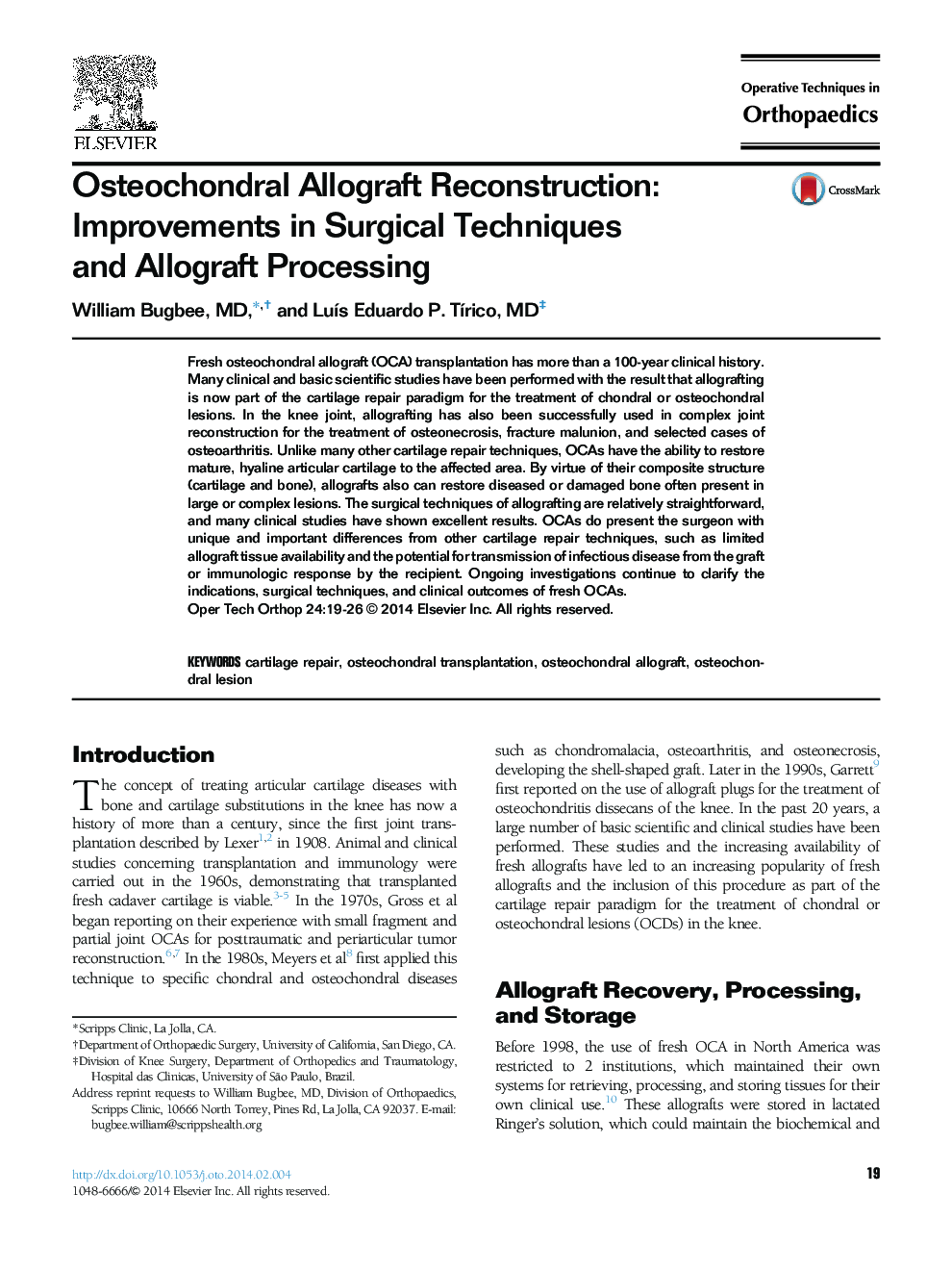| Article ID | Journal | Published Year | Pages | File Type |
|---|---|---|---|---|
| 4078869 | Operative Techniques in Orthopaedics | 2014 | 8 Pages |
Fresh osteochondral allograft (OCA) transplantation has more than a 100-year clinical history. Many clinical and basic scientific studies have been performed with the result that allografting is now part of the cartilage repair paradigm for the treatment of chondral or osteochondral lesions. In the knee joint, allografting has also been successfully used in complex joint reconstruction for the treatment of osteonecrosis, fracture malunion, and selected cases of osteoarthritis. Unlike many other cartilage repair techniques, OCAs have the ability to restore mature, hyaline articular cartilage to the affected area. By virtue of their composite structure (cartilage and bone), allografts also can restore diseased or damaged bone often present in large or complex lesions. The surgical techniques of allografting are relatively straightforward, and many clinical studies have shown excellent results. OCAs do present the surgeon with unique and important differences from other cartilage repair techniques, such as limited allograft tissue availability and the potential for transmission of infectious disease from the graft or immunologic response by the recipient. Ongoing investigations continue to clarify the indications, surgical techniques, and clinical outcomes of fresh OCAs.
